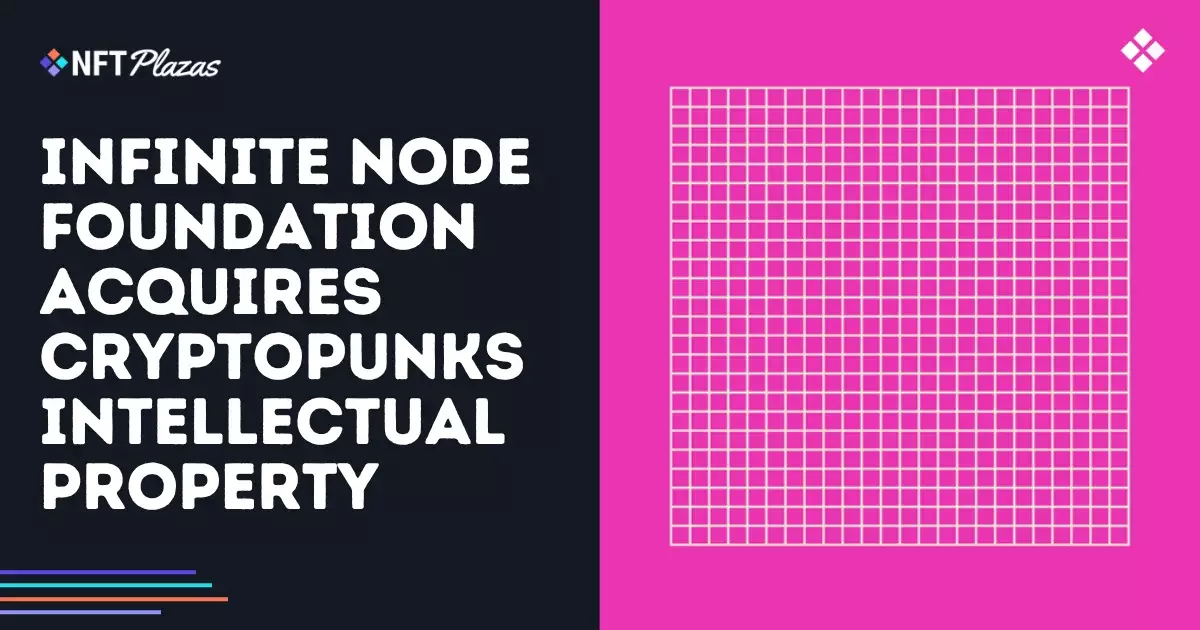The recent transition of the CryptoPunks NFT collection to the Infinite Node Foundation (NODE) signals a dramatic shift in the management of one of the most iconic digital art collections to date. The acquisition of the intellectual property rights from Yuga Labs is a groundbreaking move, not just for the collection itself but for the entire sphere of digital art. The intellectual property rights of a collection that has transcended the mere status of “art” to become a cultural symbol are now in the hands of a nonprofit focused on preservation rather than commercialization. This is significant—it reflects a move toward a more custodial and academic approach to one of the biggest innovations of our time.
Such a transition is likely to be scrutinized closely in the coming years. Many question the motives behind this change and whether a nonprofit can truly appreciate and propagate the value of something that was initially built on concepts of decentralization and commercial success. It begs the question: Does this move capture the essence of what CryptoPunks represents, or does it strip it of its commercial spirit?
Financial Commitment as a Measure of Intent
Accompanying NODE’s acquisition is a staggering commitment of $25 million aimed at preserving this digital treasure. It seems promising at first glance; however, one has to wonder about accountability in the philanthropic sector. Nonprofits often operate in bureaucracies mired in rules and regulations, which might clash with the ethos of speed and creativity characterizing blockchain innovation. What happens when significant funding is tied to objectives that may not align with the original intentions of the creators? Will the collection remain a living, breathing aspect of the digital art ecosystem, or will it become another museum piece collecting dust?
With the founders of Larva Labs and other key figures in digital art on NODE’s advisory board, we can only hope that this arrangement will do more than offer lip service to the notion of engaging with the artistic community. The crypto world has historically been driven by a free-market philosophy; will a nonprofit model be able to adapt to rapid technological changes while maintaining its commitment to preserving the past?
Shift from Private Profit to Public Good
The shift from private ownership by Yuga Labs to a nonprofit entity brings up profound philosophic questions around art, ownership, and accessibility. Many enthusiasts celebrate this move as a victory for the community that has long engaged in the CryptoPunks phenomenon. However, this shift doesn’t merely represent a philosophical triumph; it brings real implications for access and engagement. While the original creators of CryptoPunks offered the collection to the public, making it a decentralized treasure trove, NODE’s nonprofit status could alter the interaction dynamics.
In their mission statement, NODE stresses the importance of “preserving, studying, and exhibiting” these digital artworks. At face value, this sounds noble, but careful scrutiny reveals a concern: the very impulse to preserve might inhibit the organic evolution of the collection. It could lead to a sterile environment that prioritizes archival practices over innovation and experimentation—anathema to the spirit of digital artistry.
The Cultural Importance of CryptoPunks
CryptoPunks have, in essence, become symbols of a cultural movement intertwining art, technology, and community. Their appeal lies in their distinct characters and the strong narratives woven into their existence. Micky Malka, the Chair of the Node Foundation, has described the collection as a “landmark work.” However, what happens when a landmark becomes a monument? While Malka speaks of the importance of “museum-grade conservation,” the reality is that museums often become places that echo the past rather than celebrate present creativity.
By moving the management of CryptoPunks to a nonprofit framework, we are risking the dilution of the collection’s identity. The ingenuity that once drove its popularity might suffer in a landscape where commercial viability is stripped away in favor of altruistic preservation. Will CryptoPunks still resonate with future generations as a living entity in the digital art world, or will it fade into relic status?
Final Thoughts on Future Directions
While bringing CryptoPunks into a nonprofit structure certainly aims to bolster public engagement and stewardship, one cannot help but feel a disconcerting tension. The very ethos that made CryptoPunks revolutionary is at risk of being repackaged into a more palatable and less rebellious narrative. The allure of the collection lies not merely in numbers or financial support but in its spirit—its culture of decentralization and community ownership. As we witness this seismic shift, we should remain vigilant and critical. Can commerce and altruism coexist in the volatile realm of digital art? Only time will tell if NODE will be the harbinger of a vibrant future or merely another custodian of a cultural relic.


Leave a Reply